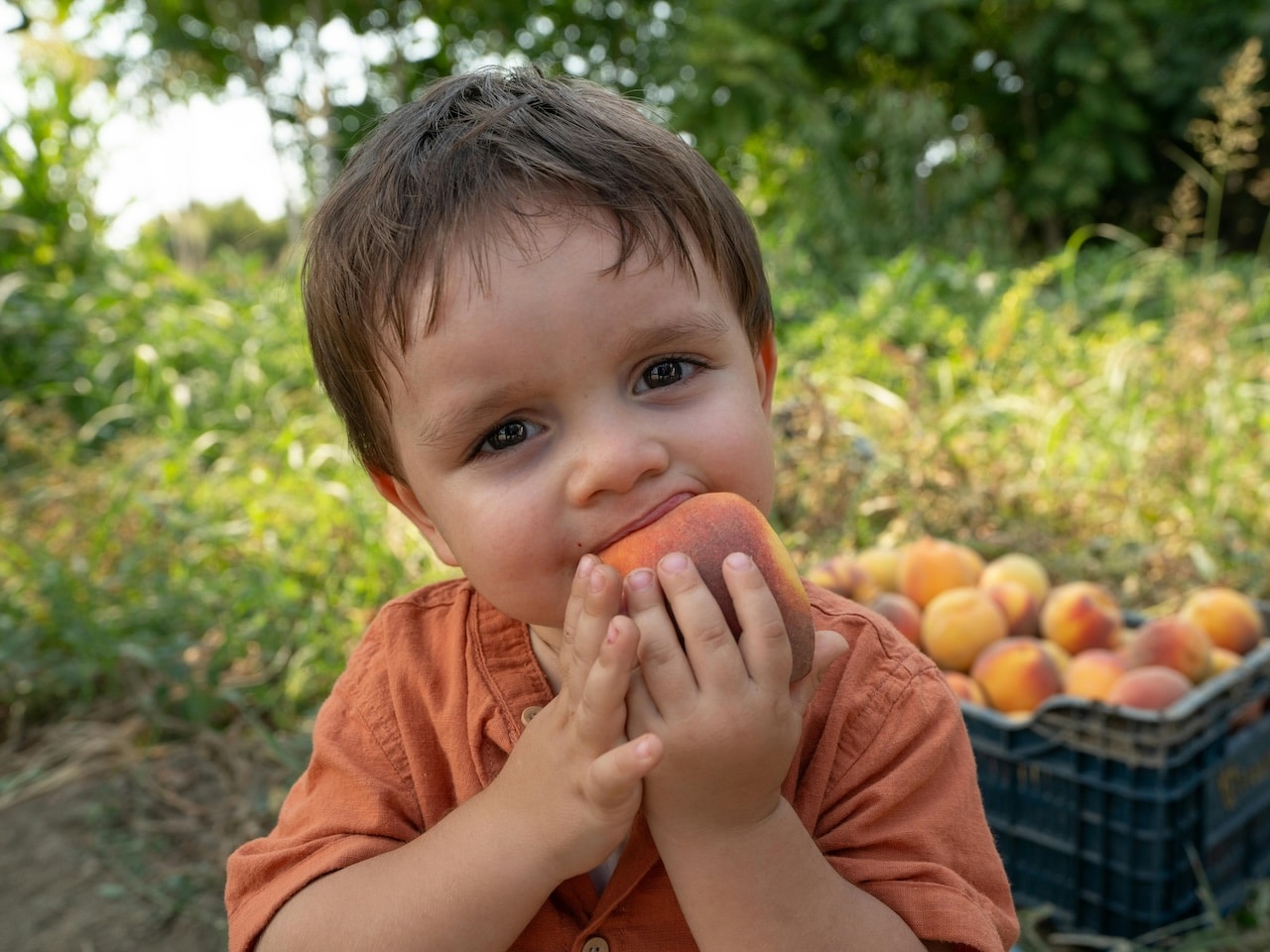
Pyramids are easy tools to learn to distinguish the different food groups and their recommended consumption frequencies. Properly interpreted, the food pyramid for children is a very useful tool for the little ones to learn the basic concepts of healthy eating.
Until relatively recently, a single pyramid was given absolute validity as a food reference guide and widely accepted by the majority of experts.
Nowadays, this narrow perspective is questioned because “There is not just one pyramid, but many.. Each one takes into account (or not) various aspects, depending on the priorities with which it has been designed,» explains Miriam Latorre, dietician-nutritionist and member of the pediatric nutrition specialization group of the Spanish Academy of Nutrition and Dietetics.
The food pyramid: what it is and why it is important for children
The most accepted pyramid in Spain is the NAOS Pyramid (2006). This is teaching material prepared by the Spanish Agency for Food Safety and Nutrition (AESAN) within the framework of the NAOS Strategy (the Strategy for Nutrition, Physical Activity and Obesity Prevention). It is a scheme that, in a graphic and very intuitive way, provides simple advice on healthy physical activity habits and recommendations on the frequency of consumption of different food groups.
Food groups and how to incorporate them into the pyramid
- Preferred drink: water. No juices, no soft drinks. Water should be the drink of choice, also for the adult population.
- daily consumption: fresh foods of plant origin, olive oil, bread and dairy products. Rice and pasta can be alternated.
- Several times a week: foods rich in proteins of animal and vegetable origin (legumes and nuts).
Alternating different foods within each group makes it easier to achieve adequate intake of different nutrients and limit boredom (especially important in children).
- occasional consumption: sweets, pastries, snacks… Non-negotiable: they should be limited only to special moments. There is no place for snacks based on buns, nor bowls of chips as a reward for completing homework.

Is it really useful?
Latorre recognizes that, despite its usefulness, “the pyramid is still a visual and simplified tool. It does not detail as much as some would like.”
The simplification seen in this food pyramid is also seen with Harvard’s Plato. «The big difference is that the Plate reduces the question of what to eat in a week to what to eat in ‘a plate’ (in one meal). This simplification can be very useful to explain how to design recipes or menus, unlike the pyramid that could be more useful for making a shopping list. We have to see both as tools to visually support certain aspects of food education, nothing beyond.»
The other Spanish ‘pyramids’
The NAOS pyramid is not the only one. There are others defined by other institutions, societies, and even by private companies.
Spanish Society of Community Nutrition (SENC, 2015).
This pyramid is aimed at the adult population. As a novelty, it includes in its base some habits related to eating (culinary techniques, weight adjustment, emotional balance). For children it has a previous version that is very similar in the rest of the aspects.
Mediterranean Diet Foundation.
It is aimed at the general population and combines information on the composition of main meals with recommendations for daily and weekly consumption frequency. It also includes other key aspects of the Mediterranean diet pattern, such as eating in company, physical activity, seasonality, etc
Others
In 2019, another pyramid with four faces, in 3D, was presented “with a lot of marketing.” Being sponsored by a famous soft drink brand reduced motivation among professionals to use it.»
Weak points: excess of cereals, sweets and ultra-processed foods
All these pyramids share – in their opinion – a starting error: the preferential place given to cereals or other foods with high starch content. «The Harvard plate makes the same mistake. This predominance of cereals «It has been dragging on for decades as a model imported from foreign pyramids that responded to periods of economic scarcity and observed the commitment to large-scale cereal monocultures to overcome the problems of food insecurity of those times.»
Currently, although the problem of food insecurity continues to exist in some families, “it would seem much more important to take into account the epidemic of obesity in the design of these tools. That the Spanish pyramids represent dietary patterns that normalize the daily consumption of large quantities of cereal and undefined frequencies (moderate or occasional) of ultra-processed foods respond to scenarios with different priorities than the current ones in our country».

Foreign food pyramids that should be looked at
An example is the australian pyramid “created in 2014 and revised in 2021. Not only does it change the position of cereals with other vegetables, it also excludes ultra-processed foods. On the contrary, it includes in its base aromatic herbs and spicesso characteristic of healthy diets and so undervalued until now.
How to explain the food pyramid in the classroom
Getting children to understand the recommendations of the food pyramid and integrate them into their daily diet requires a great effort on the part of educators. «It is necessary adapt language and concepts based on agereaching the level of attention to detail that our time and its conditions allow us,» asserts the expert.
The paradox is that, while textbooks continue to support the food pyramid, outside the classroom many proposals rely on other types of recommendations (the Harvard Plate, among others). “The solution consists of explaining, with consistent arguments, the obsolescence of the pyramid and offer alternative modelslike the Australian,” he declares.
Latorre leaves a delicate question in the air: Should the authors of textbooks have dietitians-nutritionists to review and develop content on food education?
Let’s do it! This is how the pyramid is brought into everyday life
Many parents complain that getting their children to eat fruits and vegetables, or changing ultra-processed ones for nut-based snacks, requires a titanic effort. Latorre comes to their rescue with some tricks that always work with the little ones.
Fruits and vegetables
«They mainly provide water, fiber, vitamins, minerals, antioxidants and other active compounds. They provide a lot of satiety and provide our body with substances very necessary for the regulatory functions of our body and few calories. We must Ensure that all meals include foods from this group (If all)».
A good idea would be leave the fruit bowl within reach to make it easier for them not to tend to eat other less healthy ‘snacks’. Setting an example at home by snacking on an apple or a banana as something natural invites them to do the same by imitation.
And use strategies to make visually attractive recipes. “A zucchini puree does not look or smell the same as a zucchini spaghetti with some spicy sauce, or a boat of half a zucchini stuffed with garlic shrimp and a slice of ham as a flag,” he adds.
Dairy, meat, fish and eggs
Children need a supply of foods rich in high-quality proteins for their growth and development. However, this does not mean that we can include plenty of protein foods. “We tend to eat too much protein and that doesn’t mean children will grow bigger or better. In fact, too much can cause problems.»
The goal is to alternate different protein sources, including legumes.
Sweets, pastries and others
The same thing works with children as with adults: eyes that do not see, a heart that does not feel. It’s no use saying that you can’t eat these foods if we have a pantry full of them. Nor if we adults frequently consume them in front of them in any situation (watching television, mid-morning as a snack, when going on a hike, to the beach, to the pool…).
If we want occasional consumption, the presence of these foods at home should also be occasional.
The entry The food pyramid for children: this is how you learn to eat well was first published in Nutriiendo.







Thanks for sharing. I read many of your blog posts, cool, your blog is very good.